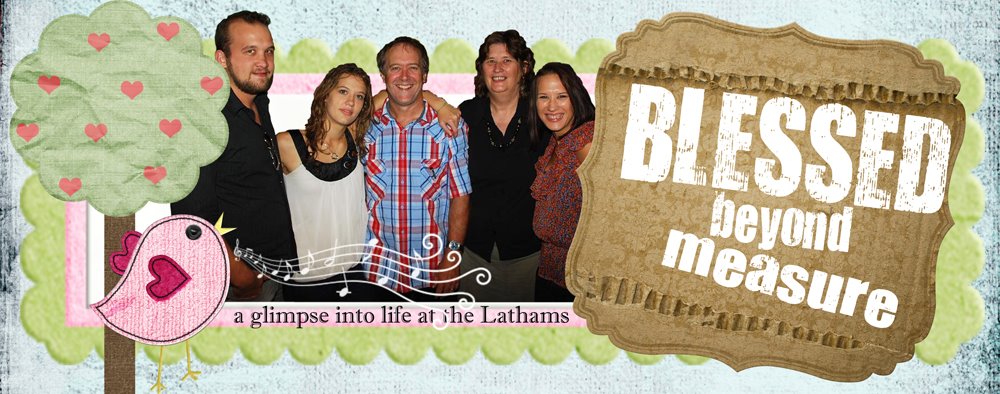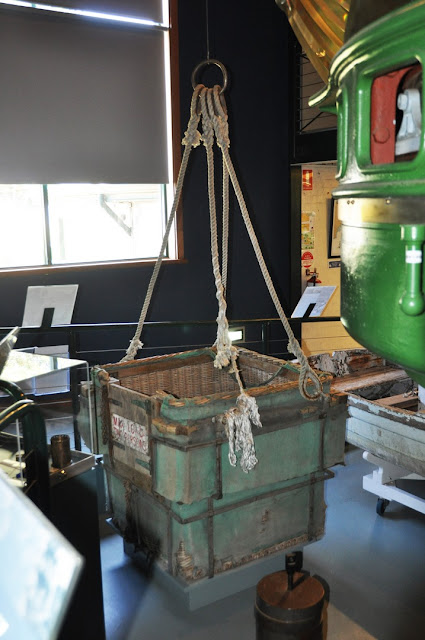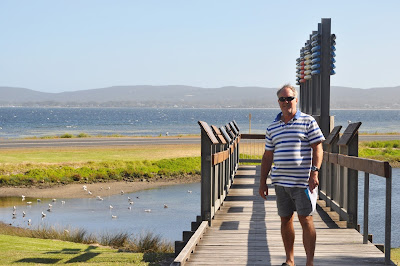DAY 129 –OUT AND ABOUT IN ALBANY….
Today we
were to have headed out to the Whaling Station, but I felt completely exhausted
and the though of being on the go all day was a little to much…. After talking to Ian and Kathy, we decided
that we would stay in Albany for an extra couple of days. We had been on the go now since leaving Perth
and a day to stop was just what I needed.
 |
| A little time to chill out beside the river |
Ian and
Kathy took off to do some exploring of their own, whilst Steve and I spent the
morning at the van just chilling out. We
had a few things we wanted to catch up, mainly being our finances, washing, my
diary, Checking our maintenance book, and booking our car in to have our tyres
rotated. Just little jobs that needed to
be done, but at least we were now
getting a chance to get them done.
By 11am we
actually felt up to going out and doing a little exploring so rather than do a
lot, we decided to go visit the “Old Farm – Strawberry Hill”
Funnily
enough, we had only just arrived when about 10 minutes later, up wander Ian and
Kathy, so we did the tour of the Old Farm together.
The Old Farm,
Strawberry Hill was considered old more than 100 years ago. As far back as 1890
it was given the name ‘The Old Farm’, in recognition of being the oldest farm
in Western Australia, established even before the Swan River Colony.
A Government Farm
was established at Strawberry Hill in 1827 as part of the first European
settlement at King George Sound. In 1833, Sir Richard Spencer was appointed
Government Resident at Albany. He purchased the Government Farm and resided
there with his wife Ann, seven sons and three daughters. They lived in a pise
cottage until, in 1836, the current two-storey stone house was built adjoining
the older home.
 |
| This is the small bedroom for the seven boys |
 |
| The three girls got to share this larger bedroom. |
 |
| Master Bedroom with bath |
By 1836 the well
established gardens were producing blood oranges, grapes, raspberries,
gooseberries, asparagus, figs and almonds. The new house was the centre of the
district’s social life.
After a period of neglect it was purchased in 1889 by Francis and Augusta Maude Bird who restored the house and farmed the land. In 1956 the property was purchased by the Government as an historic monument but fell into another cycle of neglect. It was then transferred into the hands of the National Trust in 1964, and now the property is being conserved to appropriately reflect its significance.
 |
| Servants cottage |
 |
| The Main House |
Originally, half the
farmhouse's roof was shingled and the other half-covered with slates brought
from England. All the timber on the top floor is pit-sawn maple, while the
drawing room until the early 1930s, was papered with a wallpaper depicting
scenes of South America, lagoons, wild animals and other subjects.
 |
| Check out the width and height of that door..... |
We
spent some time wandering through the house and gardens. The gardens were just beautiful, full of
flowering plants and shrubs and very colourful.
We also wandered around the property and had a close look at the
servants cottage. It was interesting to
see how it was made.
All
in all this was a wonderful place to visit.
We
all grabbed a late lunch at Subway before heading off to do some more exploring
around Albany. Ian and Kathy went to the
old gaol, whilst we went into town and then we met them at the WA Museum
Albany.
The
first exhibit we went through was all about the history of Albany as it is the colourful
history. Several European explorer
visited Albany shores prior to British settlement. The dutchman François
Thijssen in 1627, in 1792 the Frenchman Bruni
d'Entrecasteaux, In 1801 Englishman
Matthew Flinders and in 1826 Frenchman
Dumont d'Urville in the L'Astrolabe visited King George Sound.
There
were displays about the traditional landowners, the whaling, the flora and
fauna of the region, the part Albany played in the great wars and in general it
was very comprehensive.
From
here we walked across to the main museum building and the discovery centre,
where we had a look at the light house display and got to see first hand the
big lenses that are very similar to the large lenses in the Cape Naturaliste
and Cape Leeuwin Lighthouses.
Upstairs
here we vistied an aboriginal shell beading display and even had an interactive
go at beading a bracelet ourselves.
Once
we had completed our tour through the Discovery Centre we made our way outside
and visited the Old School House display where they had several old activities
like walking on stilts, board walking
and a Steve had a go on the centripetal pivot.
The Classroom was set up like a classroom that we would have gone to
school in over 40 years ago… They even
had some of the old readers that we used when we went to school… talk about
bringing back some old memories.
We wandered around the grounds and quickly looked at another war museum but after our full day at the National Anzac Centre on Monday we were a little over reading about the war.. very emotional stuff...
We
left here around 3.30pm to head home, first stopping off at the strawberry farm
first to pick up some freshly picked strawberries so that we could have some
for dinner…. They were enormous and very sweet.
Nothing like freshly picked ripe strawberries.
It
was nice to get home a little earlier than we had been, and just being able to
chill out by the river again. We so
needed this quieter paced day today.
 |
| $3.50 for a kilo of these amazing sweet strawberries |
Tomorrow will be full on again as we visit the Whaling Station and the Torndirrup National Park.
























































































































































































0 comments:
Post a Comment